14.06.2022
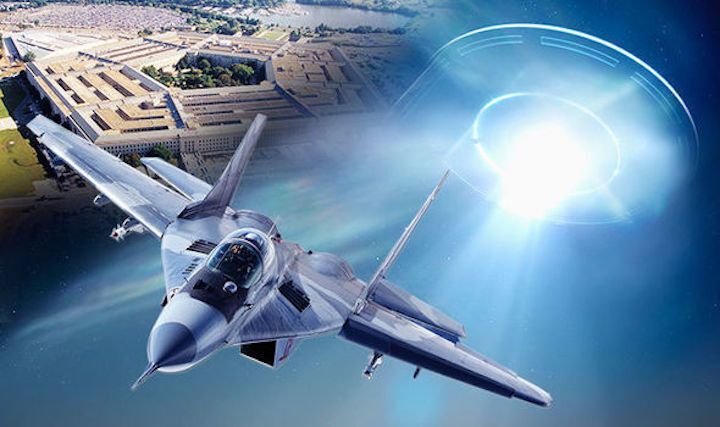
Drone Swarms That Harassed Navy Ships Off California Demystified In New Documents
A major release of documents provides the highest level of detail yet about mysterious drone swarms involving U.S. Navy ships off California.
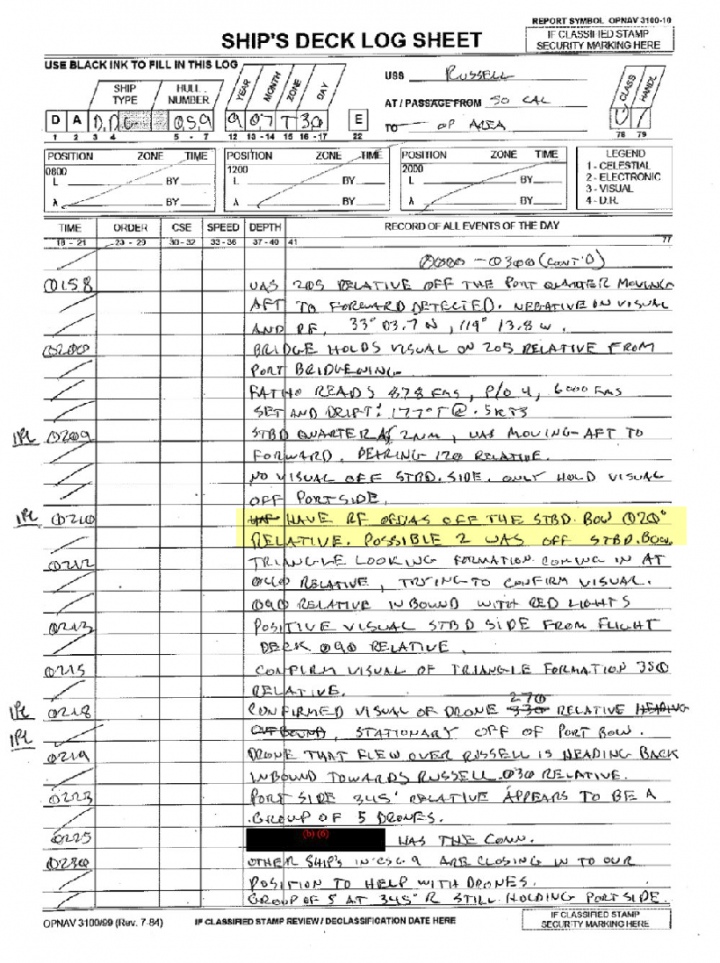
In addition to the USS Russell, the USS Paul Hamilton also reported observing multiple drones on July 30th. Though there are relatively few details, a briefing slide describes that multiple drones were observed, with some coming as close as 200 yards (closest point of approach; CPA) to the ship’s bow.
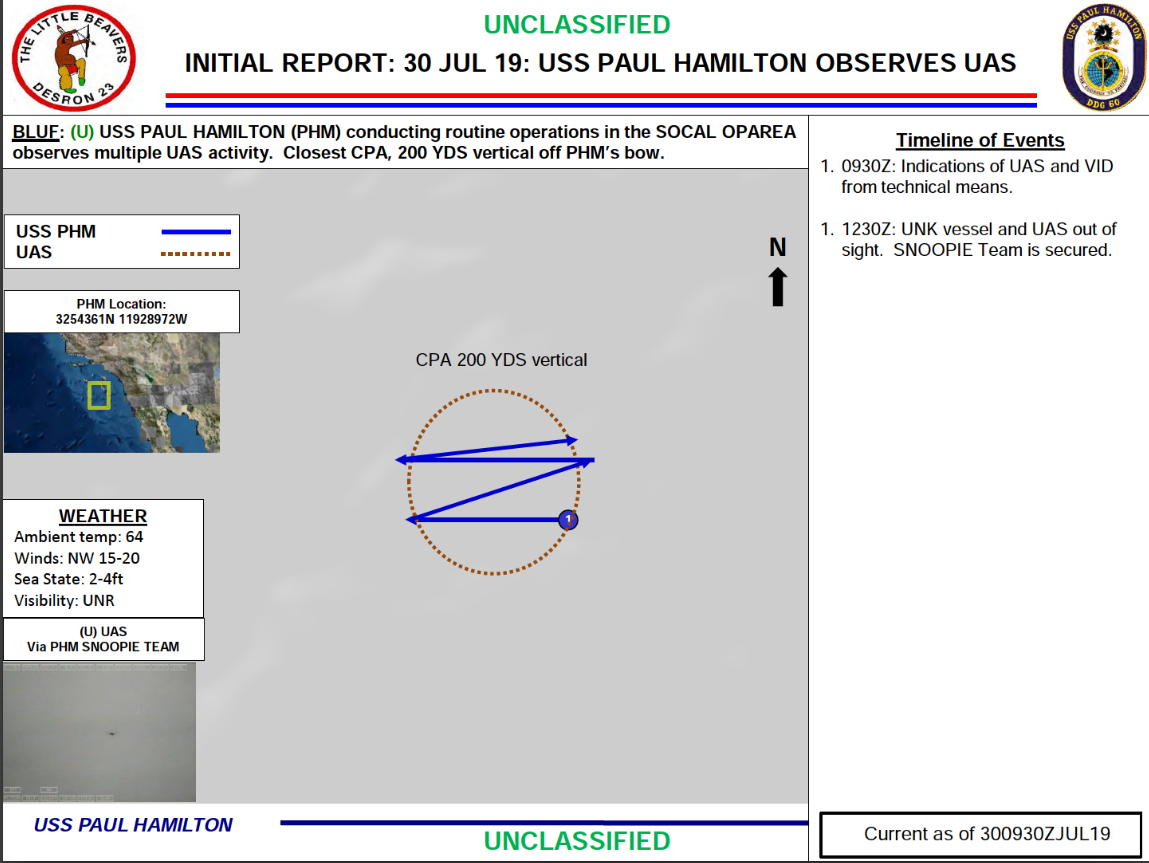
As in the other cases, a contemporaneous email report and draft public affairs statement provide further details. The USS Paul Hamilton reported observing and identifying the drones visually via “technical means.” Although an unknown vessel is referenced, it is unclear if this is the same ship that was operating near the USS Russell.
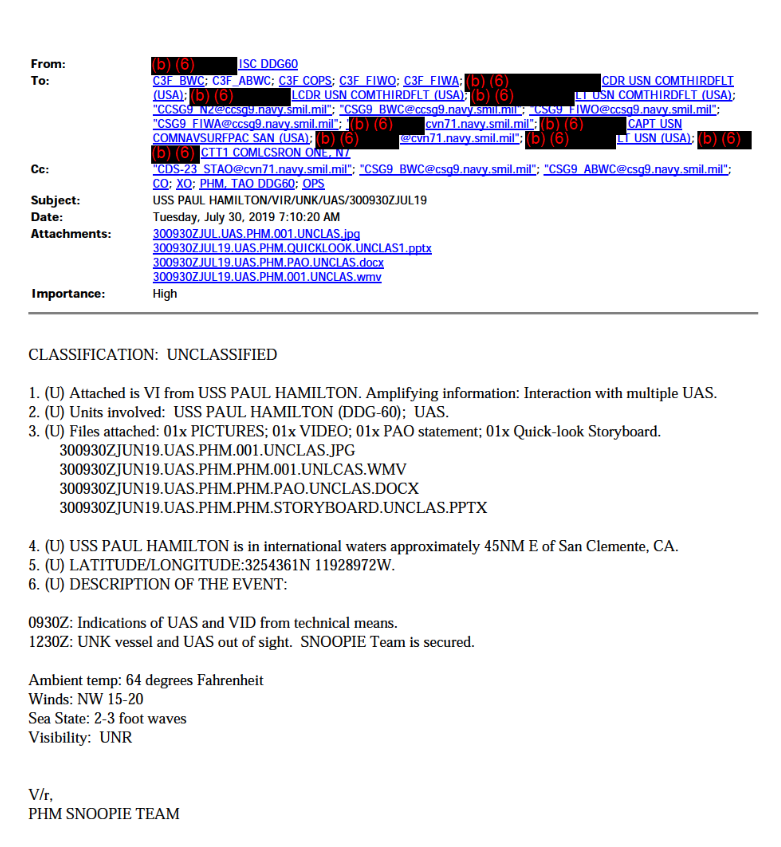
Notably, the public affairs statement characterizes the behavior of the drones as dangerous, and not in accordance with the “rules of the road” or “internationally recognized maritime customs.”
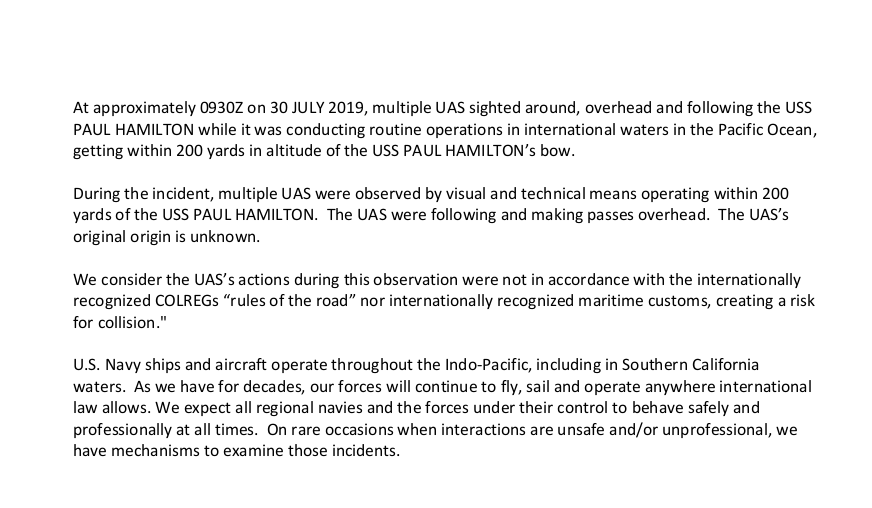
Finally, a photograph of one of the drones was included with the report:
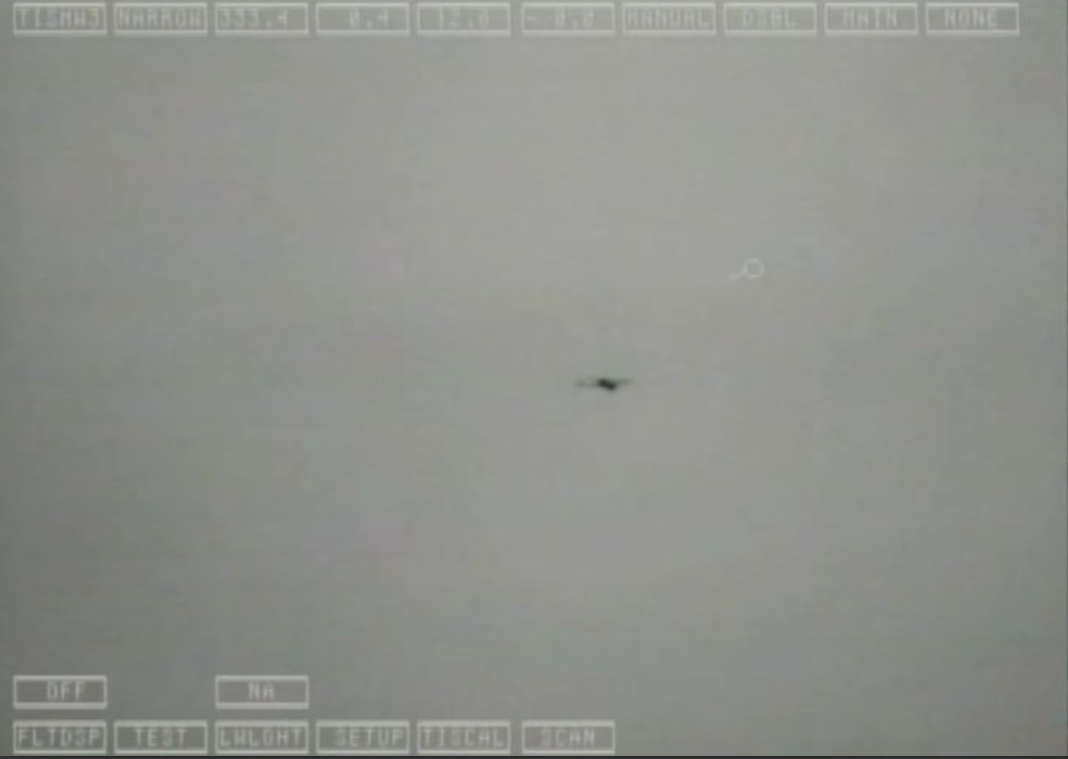
Entirely New Incidents In Early 2019
While our initial investigation focused on the cluster of drone events in July described above, these new records also indicate that at least two other significant drone swarm events occurred in the waters off Southern California earlier in 2019.
The first incident occurred on March 30, 2019. The USS Harpers Ferry (HFY), an amphibious dock landing ship, reported seeing as many as 8 unknown drones flying directly over the ship at an altitude of about 500 feet.
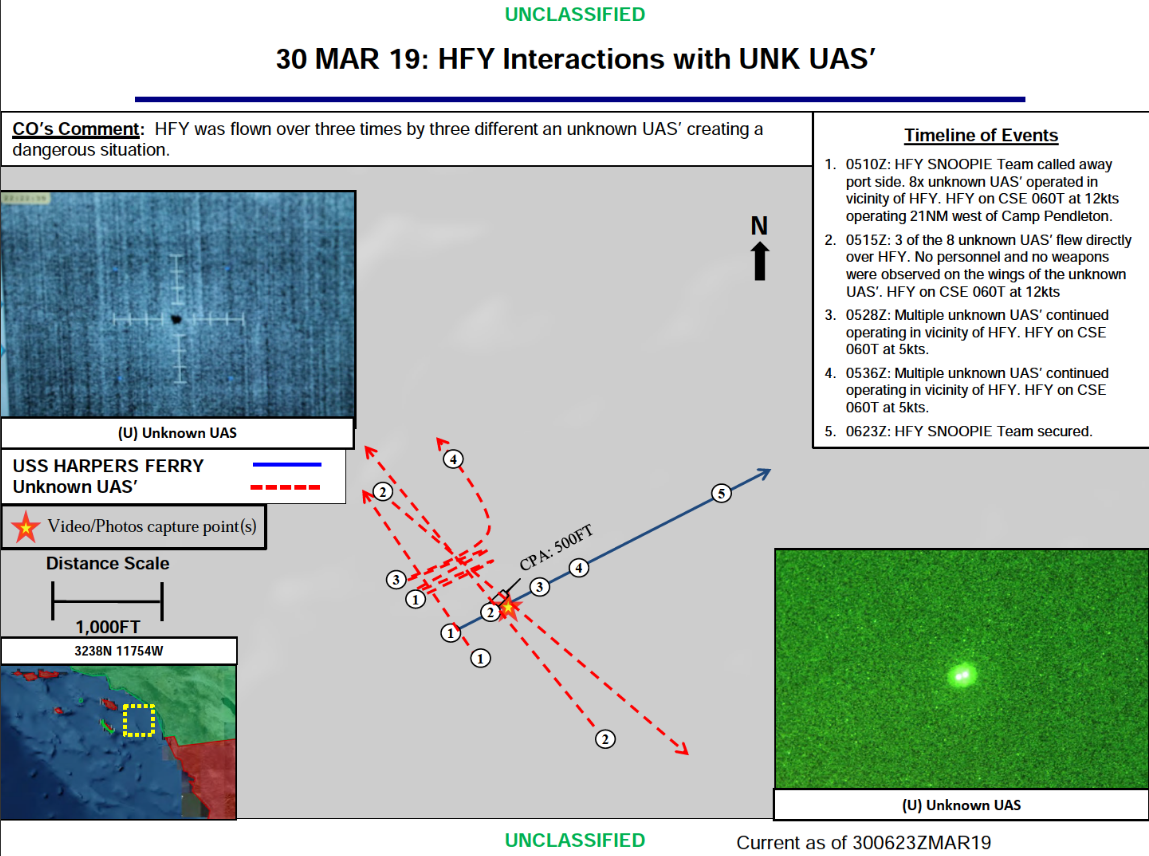
A draft public affairs statement further added that the drones were thought to be “conducting collection operations” on the ship.
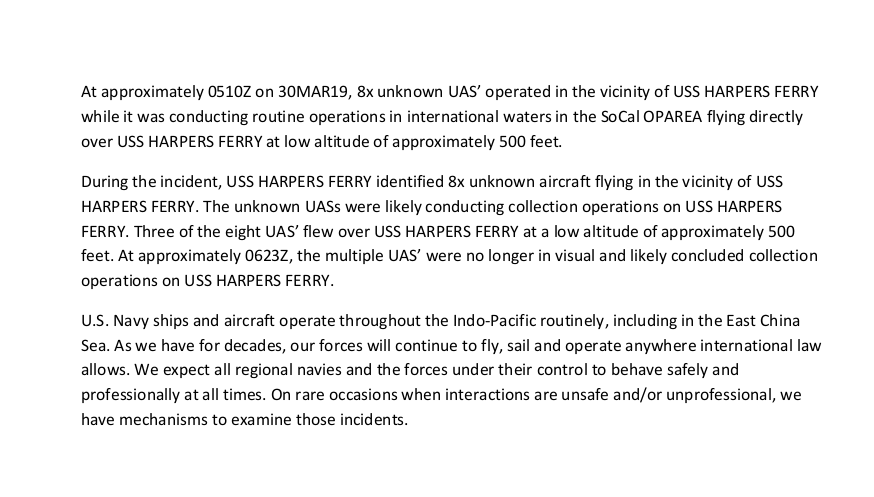
A month later, the USS Zumwalt, the Navy's most advanced surface combatant, encountered a set of six drones on April 24, 2019. In this incident, drones crossed the flight deck of the ship while flying in a “consistent pattern” that did not alter “course, speed, or altitude.”
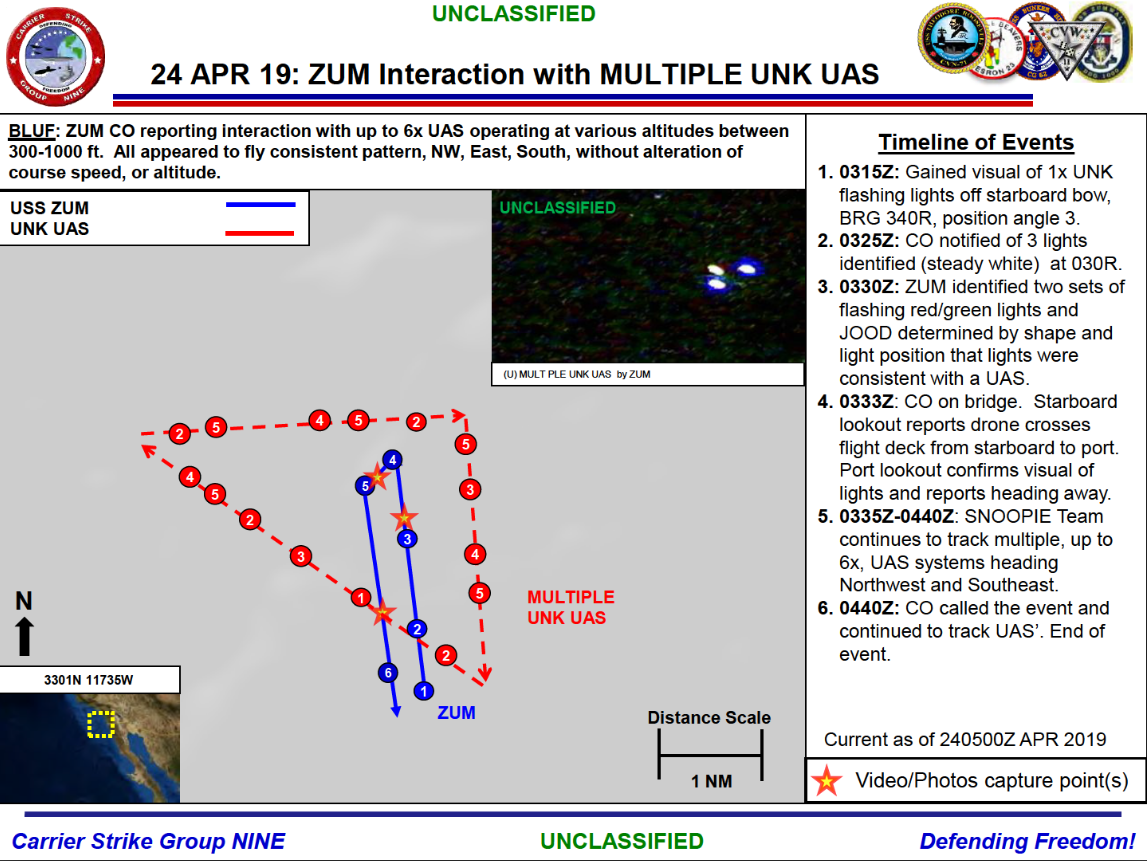
Unclear images of the drones are also attached to the report, though few details can be made out:

Drone Swarms: A Growing Issue Since 2019
Based on these documents, the U.S. Navy had at least eight distinct encounters with groups of multiple drones in the waters off California in 2019. The circumstances of these incidents vary widely. Some incidents were assessed to be “collection operations” while others were attributed to local fishermen operating personal quadcopters. While drone overflights of Navy vessels are not new, the use of multiple drones simultenously is an emerging phenomenon.
Drone swarms are an increasingly common occurrence, though precise statistics about the total number and severity of incidents are hard to come by. The War Zone has previously created an interactive database of drone incidents reported to the Federal Aviation Administration (FAA), accessible here. While this data offers some perspective on the scope of incidents, it suffers from a number of limitations inherent in ad hoc reports. The Biden administration issued a new directive to address data collection, among other provisions, regarding drone incidents earlier this year.
To get a sense of how frequently drone swarms are occurring in recent years, we recently spoke with DroneSec, a drone cybersecurity firm based in Melbourne. DroneSec collects and categorizes drone incident reports on a global basis. The company also co-facilitates the Global Drone Security Network conference, a recurring series that brings together a wide spectrum of industry, academic, and government specialists.
DroneSec CEO Mike Monnik told us that incidents involving multiple drones have increased significantly worldwide since 2019. CTO Jared Page added that “definitely in the last two years there has been a marked increase in activity related to swarms.” The company’s threat intelligence database has registered approximately 151 swarm incidents in that time. According to Page, public reports started to escalate in late 2019.
Though some of these incidents involved things like attempts to hack civilian light displays, many fall in the realm of more nefarious activities. Monnik and Page emphasized that it is increasingly easy for criminals to field drone swarms. DroneSec cited a 2020 Department of Justice audit focused on the use of drones in delivering prison contraband as an example of how swarm technology is increasingly used in practice. The report referenced one notable incident that involved the simultaneous use of 15 drones to distract and overwhelm a prison facility’s security systems. Monnik noted that in recent years it has become more common for criminals to use one or more drones as a “canary” to assess the defenses of a target. Once a target has been shown to be defenseless or easily overwhelmed, subsequent drones can be deployed to accomplish a particular mission.
The team at DroneSec also spoke to the complexity of comprehensively defending against drone threats, emphasizing that no single technical solution exists yet. In the case of the naval incidents, some ships indicated that they did not yet have any operational C-UAS technologies. Monnik and Page explained that drone detection itself remains a very complex problem that often requires specialized radar and radio frequency equipment that is not guaranteed to work in all circumstances.
Addressing these particular security gaps has been a clear priority for the Navy in recent years, with a number of high-profile projects involving directed energy weapons. These concerns are shared broadly throughout the military and United States government. Last year Marine General Kenneth McKenzie Jr. said that drones are "the most concerning tactical development since the rise of the improvised explosive device in Iraq." Battlefield commanders in Syria and Afghanistan have both had to constantly contend with drone threats. Oil facilities in Saudi Arabia have been significant targets of drone attacks in recent years, with massive economic consequences. Within the western hemisphere, drones have been used by non-state criminal actors in Mexico both as means of smuggling and as weapons of war. Domestically, drone swarms have been an issue for nuclear reactor facilities and critical industrial infrastructure.
In addition to the technical challenges posed by drones, the Department of Defense has also struggled to encourage aviators and service members to report what they see, even if they can’t clearly identify it. The unusual commingling of the longstanding UFO issue with drones has arguably created a potent cultural blindspot that can be exploited by adversaries. Arguably, the year-long confusion surrounding the leaked footage from the USS Russellattests to this problem.
Meanwhile, America's adversaries, especially China, are investing massively into drone swarm capabilities, especially for use in the maritime environment, for wartime use and for dual-role applications. Swarming capabilities are seen even by top U.S. think tanks and the Pentagon as being so critical to future conflicts that they could be decisive in a major peer-state battle, such as one over Taiwan.
Many Questions Remain
In the previous year, it has been difficult to get definitive answers regarding these incidents. In our initial investigation, public affairs officials from the Navy, Coast Guard, and Federal Bureau of Investigations all either declined to comment or referred our questions to the Department of Defense’s spokesperson handling the unidentified aerial phenomenon (UAP) issue. Public affairs officials in multiple agencies have been consistently tight-lipped on this matter, with most information coming strictly through the Freedom of Information Act.
Following last month’s congressional hearing about UAP, we sought further clarification about the national security implications of drone swarms. While the Department of Defense spokesperson acknowledged our questions, they have not provided a comment at the time of writing. The details available in these official Navy documents stand at odds with the widespread perception of Chief of Naval Operations Michael Gilday's statement last year that the Navy was unaware of who was operating the unidentified aircraft. We now know that in several instances, the Navy had significant information about the potential origin of the drones deployed in some of the most serious incidents, although the specific operators remained unknown.
Although many questions remain about these incidents, one thing is clear. Active surveillance of key naval assets is being conducted in areas where they train and employ their most sensitive systems, often within close proximity to American shores. Deputy Director of Naval Intelligence Scott Bray took pains to emphasize in a recent congressional hearing that the military "train as they would fight." Espionage collected in these areas is of extreme value to potential adversaries and poses a serious and ongoing national security threat. The War Zone previously laid out this reality and its implications in great detail in this feature.
We will continue to seek clarification regarding these incidents and keep readers updated as we analyze this complex new set of documents.
Quelle: The Warzone
